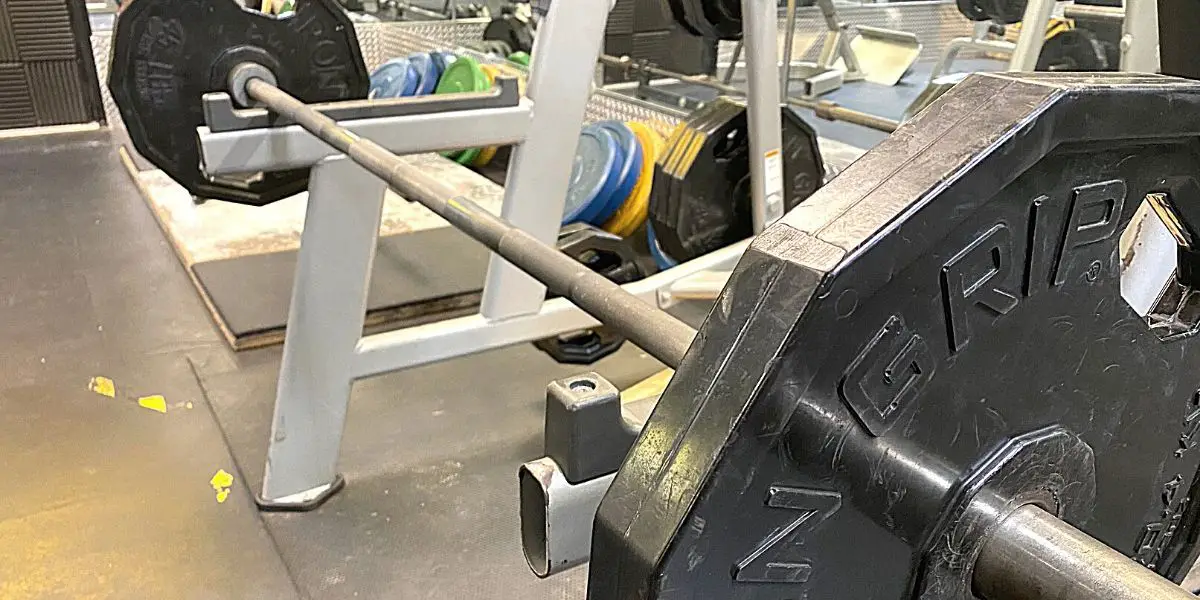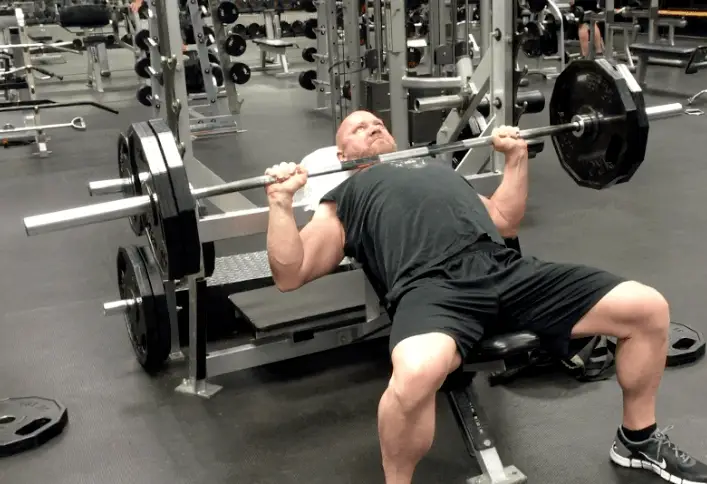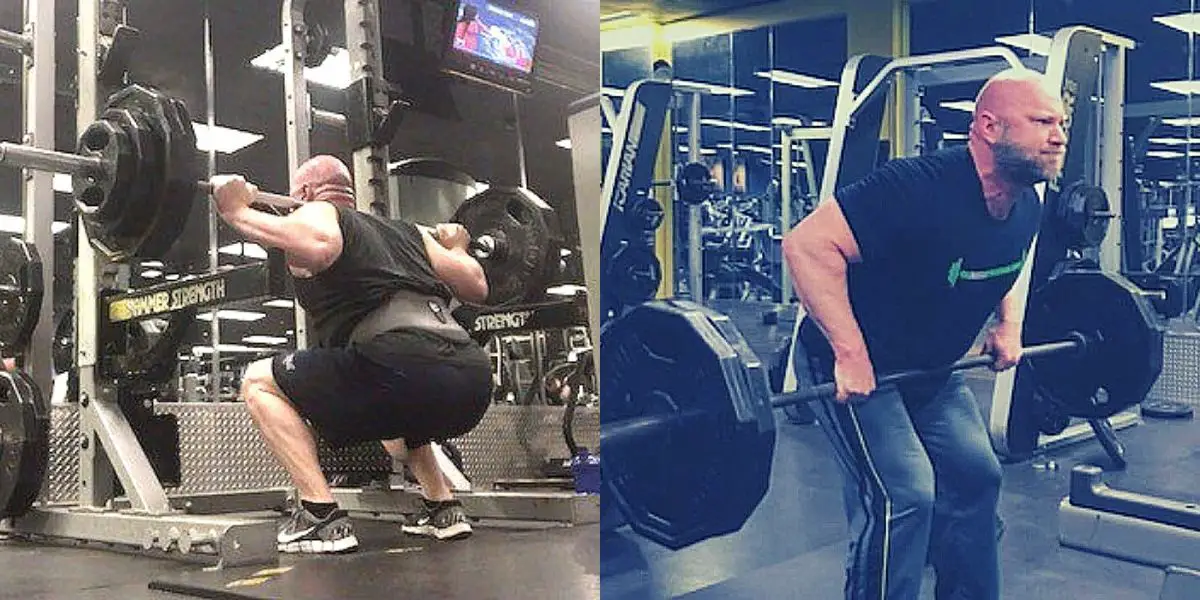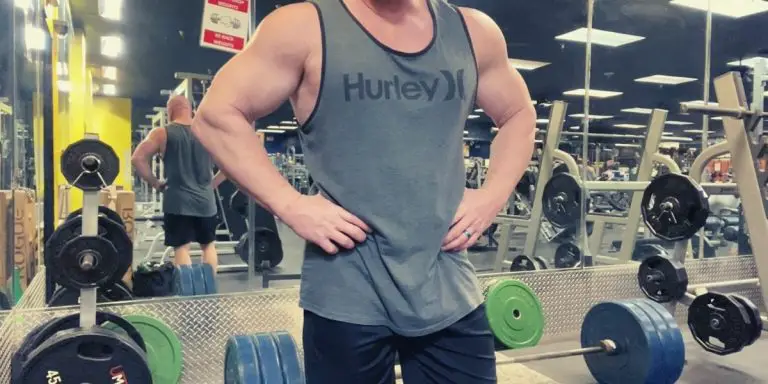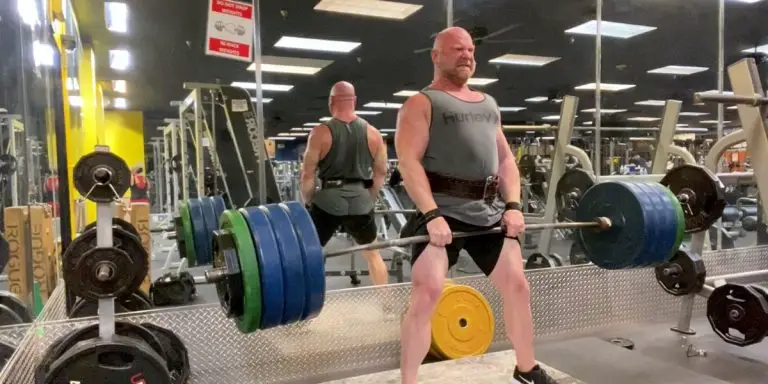Low Volume VS High Volume Weight Training
One of the most common questions that come up in the gym is how many exercises and sets are best for maximum muscle growth?
So in this post, we’re going to do a deep dive into low volume vs high volume weight training. And we’ll talk about which one is best for muscle gains.
I’m also going to give you FULL WORKOUTS for BOTH styles of training!
WARNING: After reading this, you’re going to want to hit the gym, so go grab your gym bag and sip on your pre-workout drink while you enjoy this post!
Bodybuilders That Use Low And High Volume Training
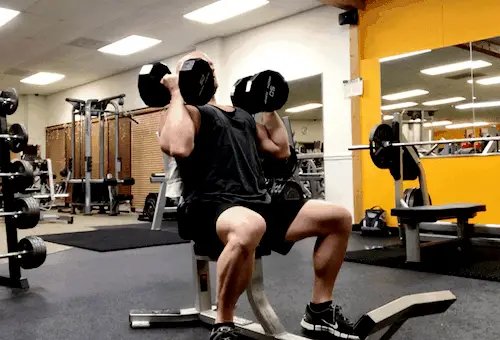
Two of the greatest bodybuilders, six-time Mr. Olympia Dorian Yates and eight-time Mr. Olympia Lee Haney, believed in short intense workouts for maximum muscle growth.
**Dorian Yates was noted to perform only two working sets per exercise and sometimes just one working set.
On the other hand, there are equally successful bodybuilders that follow a high volume training method. Arnold Schwarzenegger was known for training with extremely high volume workouts. Several bodybuilders, both from the early and current eras, follow this training philosophy.
So which one truly is best for maximum muscle growth? I’m going to help lessen the confusion below…
Both high and low volume training methods have been proven to work by countless professional bodybuilders…just take a look at their physiques!
What Is Low Volume Training?
Low volume weight training will work for you when…
- You need to get in and out of the gym (quick workouts!)
- You want to train with all-out intensity
The caveat is for this low volume workouts to be effective, you must train until you reach absolute muscle failure. So it’s all-out, take no prisoners (hey, that’s a killer Megadeth song!), and I would say balls-to-the-wall but I’m just not a fan of that phrase! Anyway…
Here’s how low volume training, or high-intensity workouts, work…
- Do two to four exercises per body part
- Do only one to two working sets for each exercise
- Train to failure on your working sets
Another important factor of low volume training is recovery. You’re going to be pushing your muscles to their maximum potential so you’ll need to make sure you get the proper rest between workouts, and also enough quality calories to recover from your workout.
In addition, some bodybuilders and weight trainers believe that being in the gym too long can be counterproductive and actually hinder muscle gains. They believe that at some point you start eating into muscle, which there is some truth to that.
Low Volume Workouts
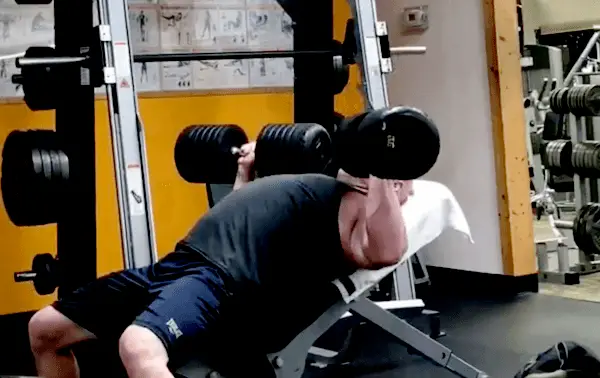
The most attractive thing about low volume training is that you’re in and out of the gym quickly. You’ll walk out of the gym pumped, and knowing that you gave max effort of every working set.
Here’s an example of a low volume, high-intensity weight training workout plan…
Low Volume Workout Plan
If you want to ensure you go to complete muscle failure, use techniques such as…
- Drop sets
- Rest-pause sets
Low Volume Workout 1: Back
| Exercise | Sets | Reps |
|---|---|---|
| Deadlifts | 2 | 4-6 |
| Barbell Rows | 2 | 6-8 |
| Lat Pulldowns | 2 | 8-10 |
| Seated Rows | 2 | 8-10 |
Low Volume Workout 2: Chest and Biceps
| Exercise | Sets | Reps |
|---|---|---|
| Bench Press | 2 | 4-6 |
| Incline Bench Press | 2 | 6-8 |
| Dumbbell Flyes | 2 | 8-10 |
| Dumbbell Curls | 1 | 8-10 |
| Preacher Curls | 1 | 8-10 |
Low Volume Workout 3: Legs
| Exercise | Sets | Reps |
|---|---|---|
| Squats | 2 | 8-10 |
| Leg Press | 2 | 10-12 |
| Stiff-leg Deadlifts | 2 | 10-12 |
| Leg Extensions | 1 | 12-15 |
| Leg Curls | 1 | 12-15 |
Low Volume Workout 4: Shoulders and Triceps
| Exercise | Sets | Reps |
|---|---|---|
| Seated Overhead Press | 2 | 4-6 |
| Dumbbell Press | 2 | 6-8 |
| Lateral Raises | 2 | 8-10 |
| Skull Crushers | 1 | 8-10 |
| Rope Pressdowns | 1 | 8-10 |
**Another intense workout program can be found in my post: HARDCORE MUSCLE BUILDING PROGRAM.
What Is High Volume Training?
High volume weight training is a different beast. Two reasons you may embrace high volume workouts are if…
- You love working out and being in the gym (for at least an hour…or more!)
- You want an awesome pump without overexerting yourself
Since these workouts will be longer you won’t be training to failure. But don’t let this fool you into thinking the workouts are easy. Because they’re not.
Here’s how high volume training works…
- Do four or more exercises per body part
- Do at least three working sets for each exercise (often will be four to five sets for larger muscles)
- You may not train as heavy, for the most part, due to the volume
High volume training doesn’t necessarily mean you’ll be training with light weights or with low intensity. You should still be training hard and using challenging weights. So don’t use high volume training as an excuse to slack off!
You’ll be in the gym longer with high volume training so more than likely you’re going to burn more calories than usual. So follow the same rule I gave you for low volume training; be consistent with your rest and nutrition.
**TIP: For longer workouts, you may want to consider taking amino acids (specifically BCAAs) during your workout. In short, this will prevent muscle waste. You can also read about my recommended BCAA supplement here.
High Volume Workouts
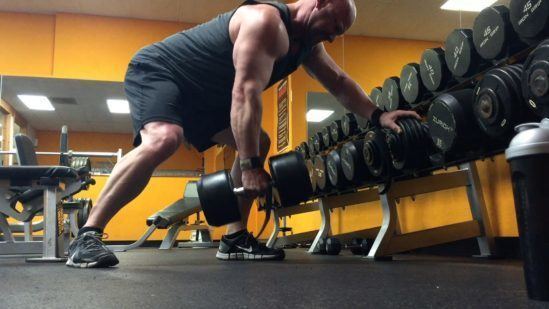
If you’re excited about being in the gym, you’re going to like this high volume workout.
Now, don’t get carried away…this doesn’t mean you should spend three hours in the gym. That’s just ridiculous. But give yourself over an hour, maybe an hour and a half.
Here’s an example of a high volume weight training workout plan…
High Volume Workout Plan
You’ll notice that the exercises are the same as the low volume workout plan, but with more sets. There are also some additional exercises included. And you typically will not go to complete muscle failure on this plan.
One technique you may want to consider using towards the end of each workout is supersets (example: you could superset the last two exercises for each body part).
High Volume Workout 1: Back
| Exercise | Sets | Reps |
|---|---|---|
| Deadlifts | 5 | 4-6 |
| Barbell Rows | 4 | 6-8 |
| Dumbbell Rows | 4 | 8-10 |
| Lat Pulldowns | 4 | 8-10 |
| Seated Rows | 3 | 8-10 |
High Volume Workout 2: Chest and Biceps
| Exercise | Sets | Reps |
|---|---|---|
| Bench Press | 4 | 4-6 |
| Incline Bench Press | 4 | 6-8 |
| Incline Dumbbell Press | 4 | 8-10 |
| Dumbbell Flyes | 3 | 8-10 |
| Dumbbell Curls | 3 | 8-10 |
| Preacher Curls | 3 | 8-10 |
High Volume Workout 3: Legs
| Exercise | Sets | Reps |
|---|---|---|
| Squats | 5 | 8-10 |
| Leg Press | 4 | 10-12 |
| Stiff-leg Deadlifts | 4 | 10-12 |
| Leg Extensions | 5 | 12-15 |
| Leg Curls | 5 | 12-15 |
High Volume Workout 4: Shoulders and Triceps
| Exercise | Sets | Reps |
|---|---|---|
| Seated Overhead Press | 4 | 4-6 |
| Dumbbell Press | 4 | 6-8 |
| Lateral Raises | 4 | 8-10 |
| Skull Crushers | 3 | 8-10 |
| Rope Pressdowns | 3 | 8-10 |
**If you’re looking for more of a traditional bodybuilding workout, then check out my post 8 Week Bodybuilding Workout for Mass Gains.
How To Alternate Low and High Volume Training For Maximum Muscle Growth
So what do you think is best for maximum muscle growth? Low volume, or high volume workouts?
Actually, you may find that both methods work great, but only for a certain time. If you stay on one workout program too long, your gains will come to a halt. Why? Because our muscles and body will eventually adapt to the same workout.
If you want to experience maximum muscle growth, you should consider doing both low and high volume weight training.
Here’s a quick reference guide to how you can alternate low volumes and high volume workouts:
- Weeks 1-8: HIGH Volume Workouts
- Weeks 9-16: LOW Volume Workouts
- Weeks 17-24: HIGH Volume Workouts
- Weeks 25-32: LOW Volume Workouts
How Often Should You Change Your Workouts?
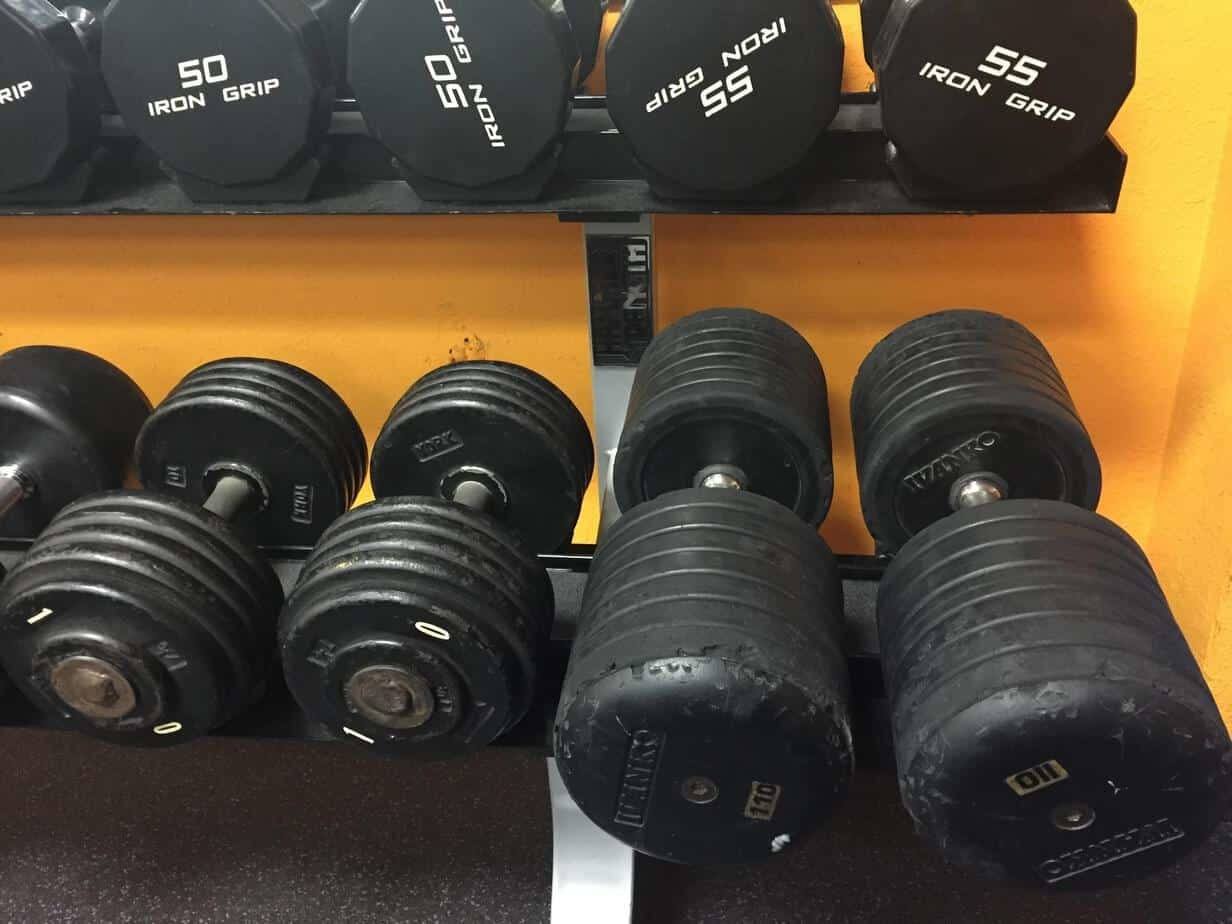
You could even break this down further into 4 or 6-week intervals. You see, making changes in your workouts every few weeks will shock your muscles into growth.
Example:
- Weeks 1-4: HIGH Volume Workouts
- Weeks 4-8: LOW Volume Workouts…
To add, when I say change your workouts, you don’t necessarily have to make extreme changes. I’m a strong believer in keeping your core mass building exercises in your program at all times, or at least most times.
As you saw in both the low volume and high volume workouts above, you’re still doing compound exercises like squats, deadlifts, rows, and bench press. That’s your foundation for bodybuilding, so you don’t want to stray from doing those exercises.
Gain More Muscle With High And Low Volume Workouts
Try changing the volume of your workouts every few weeks as described above and see if that leads to new muscle gains. You can set a schedule or just go by how you feel.
Either way, alternating both low and high volume workouts can be extremely effective at helping you maximize muscle growth and get to the next level.
**Check out my premium programs here:
Train with Passion,
Jason

